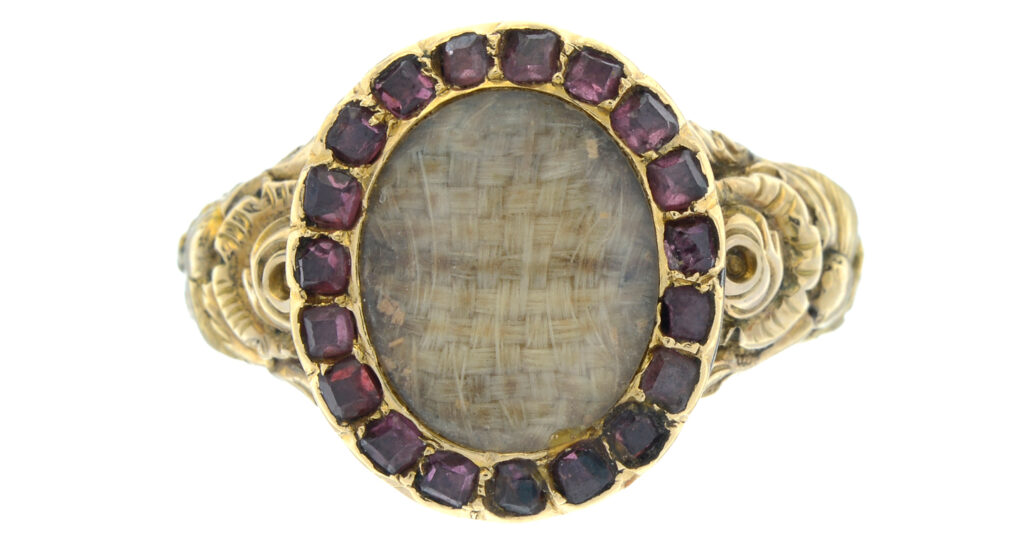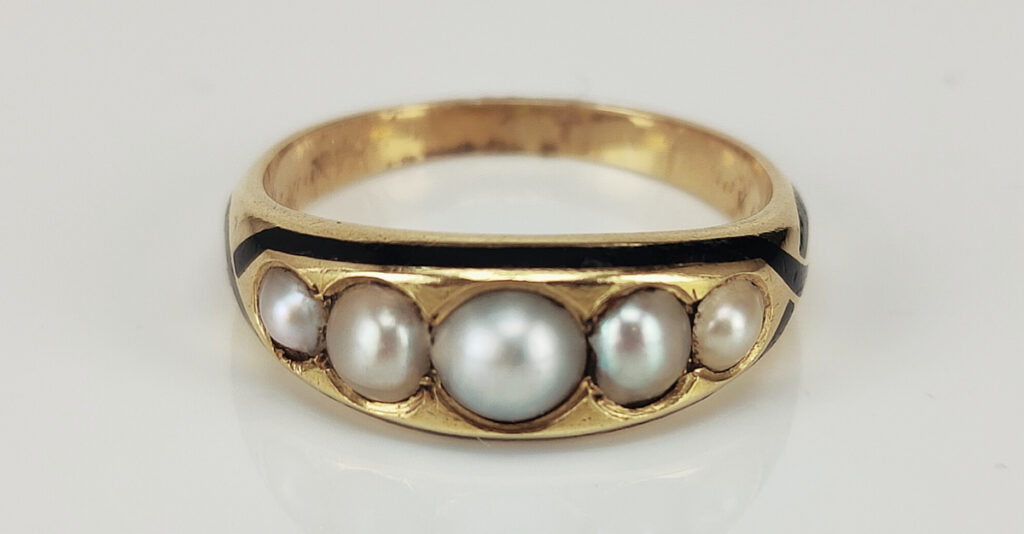French Neoclassical Male Mourning Ring
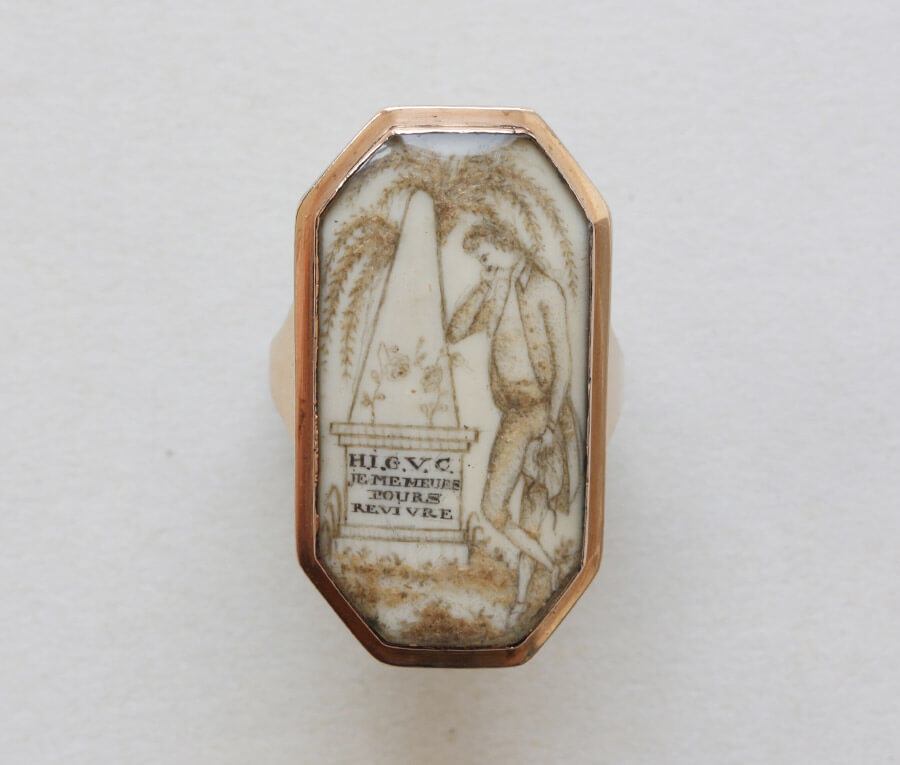
Mourning jewellery design is separated by religious piety and values. Since the Protestant Reformation in 1517, the split between the Catholic and Protestant interpretations of death were distinguished by the values of ‘memento mori’ (‘remember you will die’). Showing the desecration of the body and the constant design reminder in jewellery and art that death was inevitable deflected the concept of ‘final judgement’, which was promoted by the humanist movement in the early modern era.
While the mourning jewels that we understand as clearly utilising the elements of death, such as black enamel, memento mori symbolism, neoclassical urns and ‘IN MEMORY OF’ dedications are obvious to the modern collector, pieces that are influenced by a Catholic society are quite different. French mourning jewels during the time of the Neoclassical period, c.1760 – c.1820, are more literal to their subject, while those of the Anglican United Kingdom and its colonies are more allegorical.
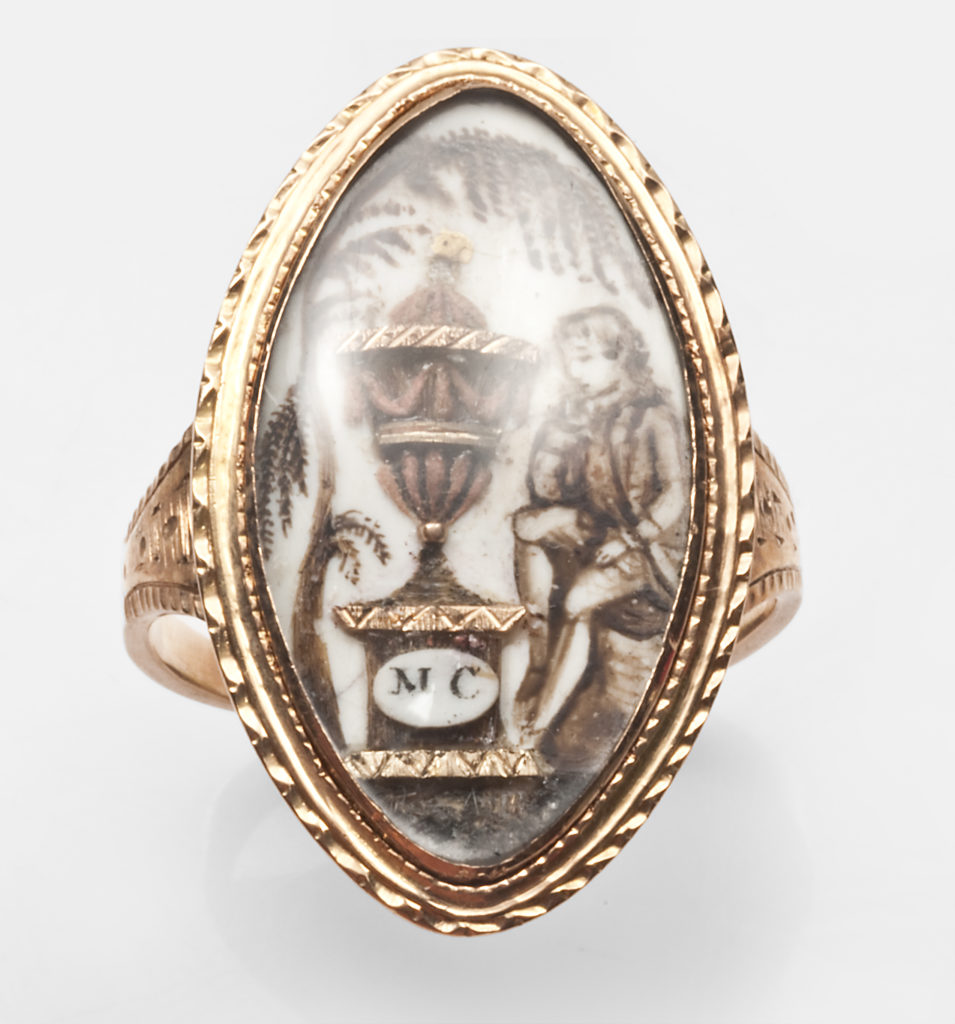
A key factor in the difference of allegory is the use of the male in mourning. The female is the most common figure represented in mourning jewels and it is important to distinguish why the male was rarely used and the female used so commonly during the c.1760-c.1820 period.
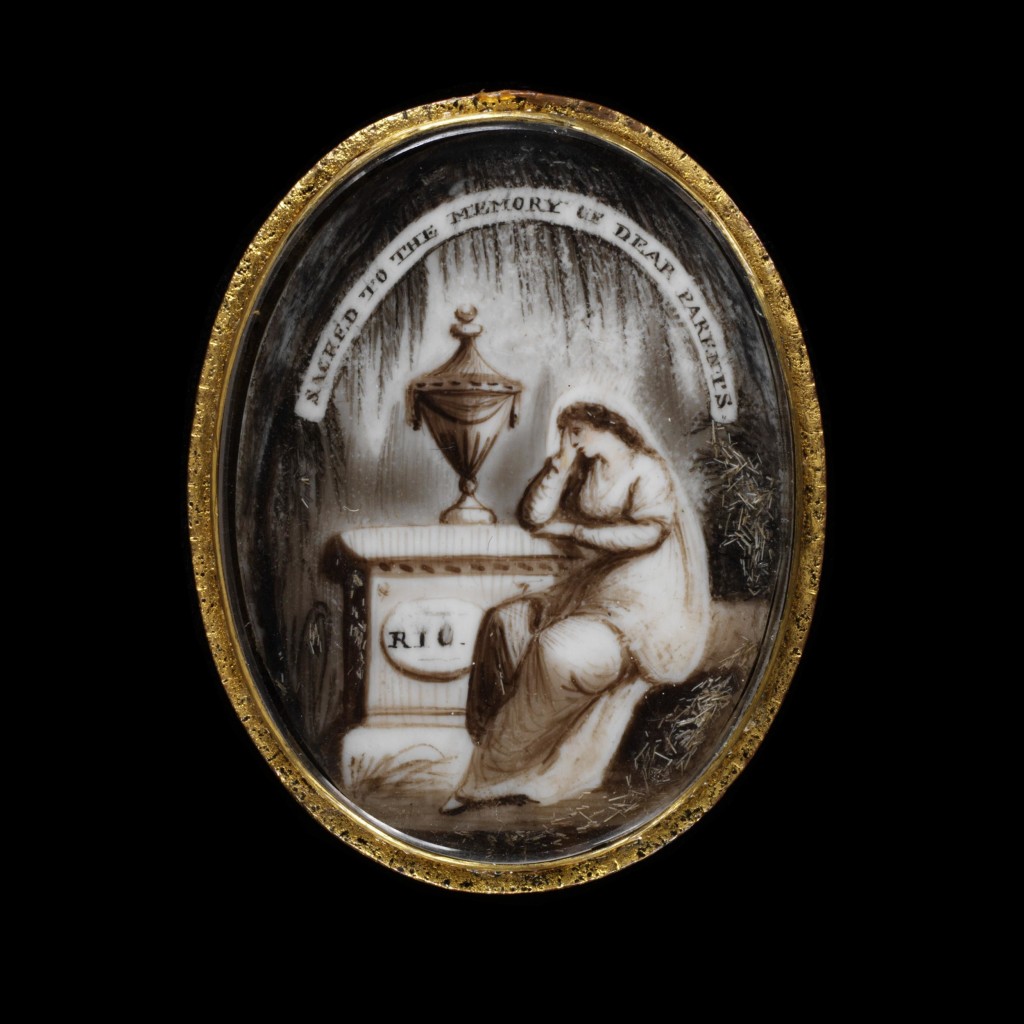
The typical depiction of the allegorical female can be seen in the above miniature. Her Greco-Roman dress and its many folds cascade across her, as she leans against the plinth that holds the urn. The remnants of the loved one are represented by the urn and her grief for her parents is quite clear from her expression. She is the epitome of human grief, not representing one gender, but an ideal, unaffiliated with any other value.

She is not religiously affiliated, with some whose family values were highly Christian, connecting the female with the Madonna, but she is still a Greco-Roman figure who can represent grief and hope in a mourning jewellery scenario. The pair of grisaille on ivory bracelet clasps above were designed by Joshua Reynolds Snr (1723 – 1792) date from the 1775 – 1800 and show just how popular the female in Greco-Roman dress was. These are both fashionable and sentimental, but not for the use of mourning. The image of ‘hope’ would especially become a primary motif during the Napoleonic Wars (1803 – 1815), as the image of the lady pointing out to sea with the anchor of ‘hope’ took on a literal meaning.

This is why the ring in this article is important to note for its heritage. There are three elements of importance to note when observing its design. The depiction of the male in mourning is the first primary element in its mourning scenario. The second is the statement of:
Je Me Meurs Pour Revivre (I died to live again with god in heaven)
Sentiments written into Neoclassical mourning jewels were often bespoke, or at least chosen from a series of phrases. Spotting these is quite clear, as the sentiment is often poorly designed into the scenario or using a different coloured paint to the rest of the image. In this ring, it is quite clear that it has both of these things, making the dedication quite a personal one for the family of the mourned. The literal depiction of the tomb and plinth that this dedication is written on is painted in sepia tones on ivory, which is typical for these Neoclassical jewels. What makes this important is the scenario isn’t exaggerated like those from England. The balance of the man to the tomb is quite equal, whereas many contemporary designs, which were produced in high volume, show the female being overshadowed by her surrounding symbolism.
The ring’s clear statement that the person ‘died to live again with god in heaven’ speaks to the eternal soul returning to where it had come from, being in heaven with god. Here, the religious elements and the personal elements speak through the design of the ring, as it becomes related more to a miniature portrait of a man suffering grief. It is not designed to be as allegorical as its British cousins and fits in well with the Catholic society of France.
It is the depiction of the gentleman that grounds the sadness and immediacy of death that is the focus of why this ring was produced. Someone died and this ring was created and this gentleman is the person affected by the death of the loved one. The individual is lost to the modern viewer, outside of the initials on the tomb, but the grief of the man can still be felt. Male mourning pieces are quite rare, as they were commissioned by the person in grief to depict themselves, making it closer to a miniature portrait. He is dressed in high fashion, with pantaloons, breeches, frock coat, holding a handkerchief and leaning against the obelisk tomb. It is s snapshot into the life of a person of the late 18th century, which is. fascinating piece of living history and look inside human behaviour.
Finally, the shape of the ring is very telling as to its origins. A contemporary ring to this can be seen below:
Note the style and design are similar, and so is the shape. This octagonal shape can be seen in French mourning jewels of the late 18th century, which is a good way to identify the approximate age/origin of a jewel. The latter 18th century utilised the large, north to south, ‘navette’ shape to house the painted ivory, which was highly standardised after the c.1760s. The octagonal shape was a great way to utilise this large canvas for the art, allowing the artist more space to design.
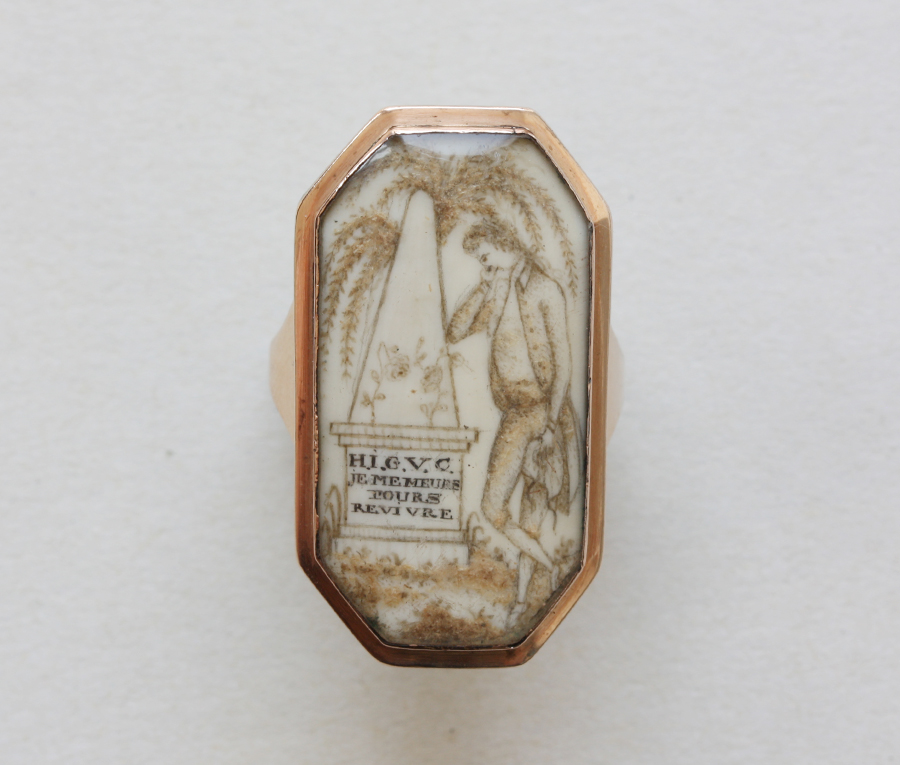
Death is a certainty and loving memory can last forever, as seen by this magnificent ring. The memory is kept within the scenario of the grieving man, as he holds his handkerchief, which would be used for clearing the tears away from his eyes. Regardless of religion, mourning jewels connect people through their art and promote sadness to others. Wearing this jewel is a clear statement by the person who commissioned it as to the commitment of their love and memory.
Courtesy: Inez Stodel Antique Jewellery





